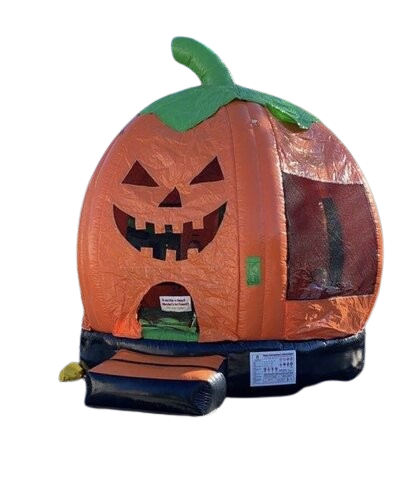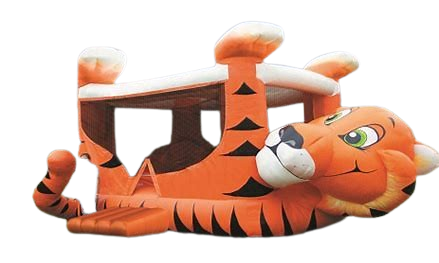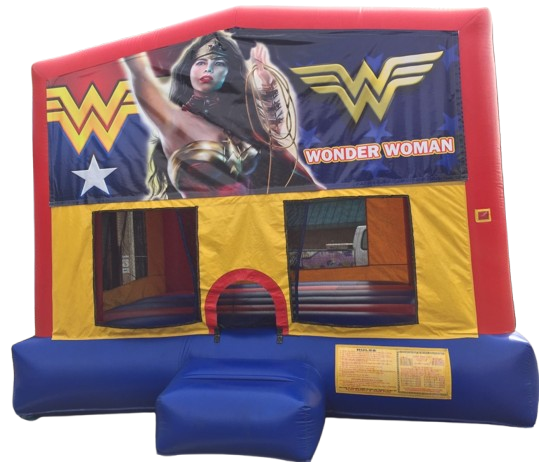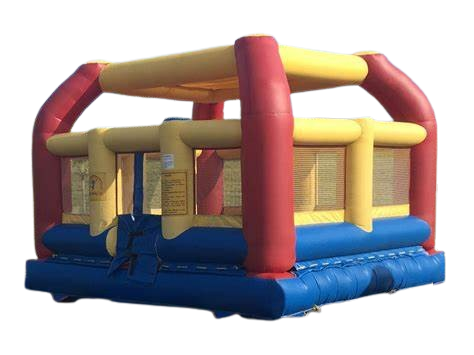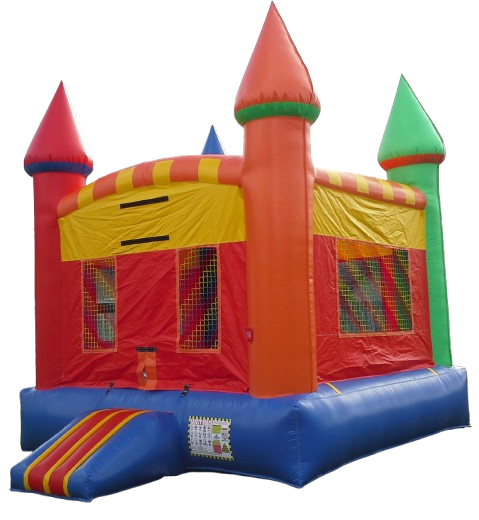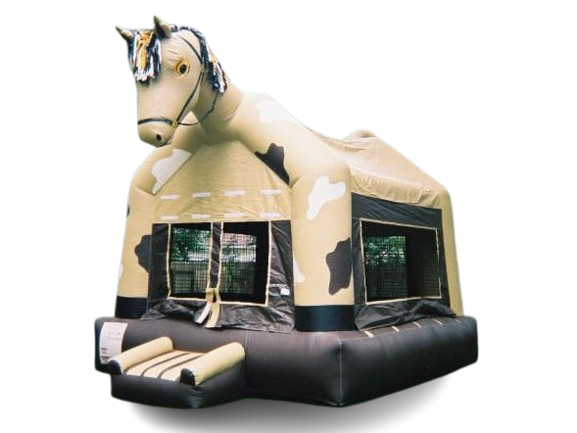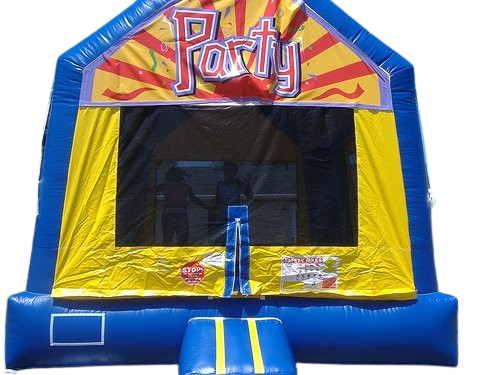Bounce House Rentals info
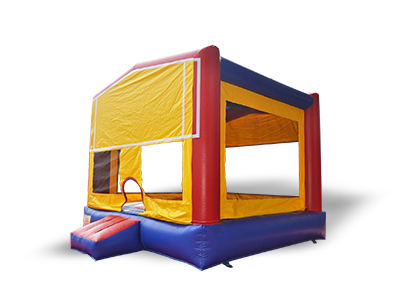
Bounce House(s)
Bounce house rentals are a popular choice for parties and events, offering fun and entertainment for children and adults alike. Here are some key facts about bounce house rentals, including details on sizes, colors, themes, and delivery areas:
1.Sizes: Bounce houses come in various sizes to accommodate different numbers of guests and event spaces. Common sizes include:
- Small: Suitable for 3-5 children, typically around 10x10 feet.
- Medium: Fits 6-8 children, usually around 13x13 feet.
- Large: Can accommodate 9-12 children, often around 15x15 feet.
- Extra Large: Designed for larger groups, these can be 20x20 feet or more.
2.Colors: Bounce houses are available in a wide range of vibrant colors to match your event's theme or personal preferences. Popular color combinations include:
- Primary colors (red, blue, yellow)
- Pastels (pink, light blue, lavender)
- Bright and bold (neon green, orange, purple)
3.Themes: Many bounce house rentals offer themed options to enhance your party's atmosphere. Some popular themes include:
- Cartoon characters (Mickey Mouse, SpongeBob SquarePants)
- Princess castles
- Pirate ships
- Sports themes (soccer, basketball)
- Jungle or safari adventures
Delivery Areas:, if you are located in Pasco County and the surrounding areas, you can expect delivery services to include:
- New Port Richey
- Wesley Chapel
- Land O' Lakes
- Hudson
- Holiday
and EVERYTHING INBETWEEN !
(dont see your city ?reach out to (727)485-4309 or vist our delivery/service area page)
When renting a bounce house, it is essential to consider the size of your event space, the number of children attending, and any specific themes or colors you desire. Additionally, ensure that the rental company delivers to your location and provides setup and takedown services for a hassle-free experience.
BOOK A BOUNCE HOUSE
1.Sizes: Bounce houses come in various sizes to accommodate different numbers of guests and event spaces. Common sizes include:
- Small: Suitable for 3-5 children, typically around 10x10 feet.
- Medium: Fits 6-8 children, usually around 13x13 feet.
- Large: Can accommodate 9-12 children, often around 15x15 feet.
- Extra Large: Designed for larger groups, these can be 20x20 feet or more.
2.Colors: Bounce houses are available in a wide range of vibrant colors to match your event's theme or personal preferences. Popular color combinations include:
- Primary colors (red, blue, yellow)
- Pastels (pink, light blue, lavender)
- Bright and bold (neon green, orange, purple)
3.Themes: Many bounce house rentals offer themed options to enhance your party's atmosphere. Some popular themes include:
- Cartoon characters (Mickey Mouse, SpongeBob SquarePants)
- Princess castles
- Pirate ships
- Sports themes (soccer, basketball)
- Jungle or safari adventures
Delivery Areas:, if you are located in Pasco County and the surrounding areas, you can expect delivery services to include:
- New Port Richey
- Wesley Chapel
- Land O' Lakes
- Hudson
- Holiday
and EVERYTHING INBETWEEN !
(dont see your city ?reach out to (727)485-4309 or vist our delivery/service area page)
When renting a bounce house, it is essential to consider the size of your event space, the number of children attending, and any specific themes or colors you desire. Additionally, ensure that the rental company delivers to your location and provides setup and takedown services for a hassle-free experience.
Banner bounce Houses
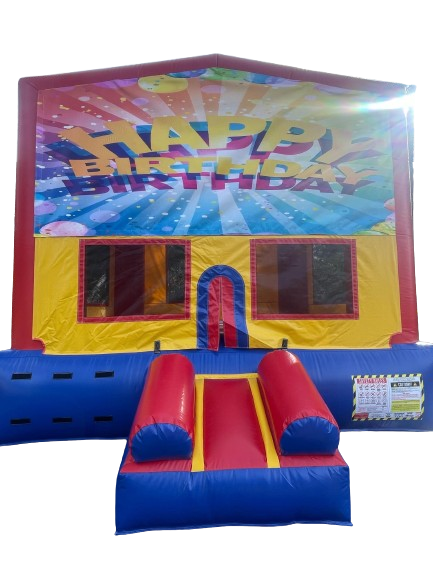
Welcome to our exciting collection of banners, where we offer over 17 unique styles to suit any occasion! From enchanting Disney themes to vibrant Happy Birthday designs, our banners are perfect for adding a special touch to your event. These banners are compatible with both our Banner Girl and Banner Boy bounce houses, ensuring a fun and personalized experience for everyone. Explore our themed options today and make your celebration unforgettable with our banner bounce houses!
view our banners HERE !
VIEW our banner GIRL and banner BOY bounce houses ! (click the link)
view our banners HERE !
VIEW our banner GIRL and banner BOY bounce houses ! (click the link)
Bounce House History
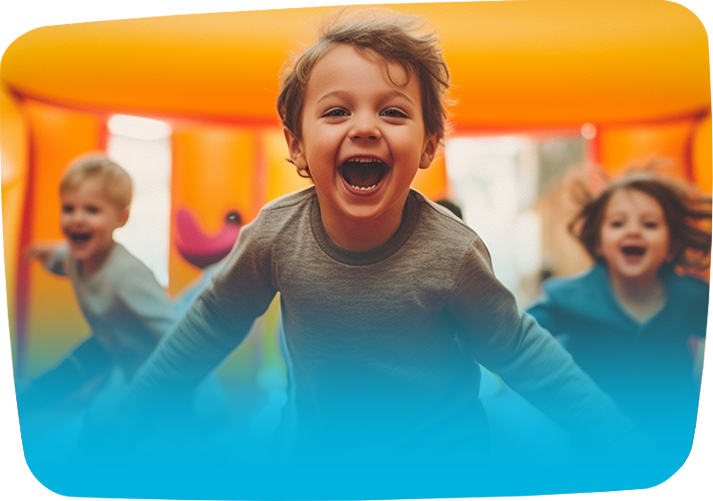
Bounce houses, also known as inflatable bounce houses, moonwalks, or bouncy castles, have an interesting history that dates back to the late 1950s. The concept was first introduced by John Scurlock, a mechanical engineer from Shreveport, Louisiana. Scurlock was experimenting with inflatable covers for tennis courts when he noticed his employees having fun jumping on the inflatable structures. This observation led him to develop the first inflatable amusement structure.
In 1959, Scurlock created the first inflatable bounce house, initially called the "Space Walk." This early version was a simple, inflatable mattress without walls or a roof. It quickly gained popularity as a fun and safe activity for children at parties and events. Recognizing the potential of his invention, Scurlock founded the first inflatable rental company, Space Walk, Inc.
As the popularity of bounce houses grew, so did the innovation in their design. In the 1970s, Scurlock's wife, Frances, played a significant role in marketing and expanding the business. They introduced the concept of adding walls and a roof to the inflatable structures, which significantly improved safety and allowed for more creative designs. These enhancements led to the creation of the first inflatable bounce house with a castle-like appearance, giving rise to the term "bouncy castle."
Throughout the 1980s and 1990s, bounce houses continued to evolve with more elaborate designs, themes, and features. Manufacturers began to produce a wide variety of inflatables, including obstacle courses, slides, and interactive games. This diversification expanded the appeal of bounce houses to a broader audience, including older children and adults.
Today, bounce houses are a staple at birthday parties, school events, fairs, and other celebrations. They come in various shapes, sizes, and themes, catering to different age groups and interests. The industry has also seen advancements in materials and safety standards, ensuring a safe and enjoyable experience for users.
In summary, the history of bounce houses began with John Scurlock's innovative idea in the late 1950s and has since grown into a popular and diverse industry. From simple inflatable mattresses to intricate and themed structures, bounce houses have become a beloved form of entertainment for people of all ages !
In 1959, Scurlock created the first inflatable bounce house, initially called the "Space Walk." This early version was a simple, inflatable mattress without walls or a roof. It quickly gained popularity as a fun and safe activity for children at parties and events. Recognizing the potential of his invention, Scurlock founded the first inflatable rental company, Space Walk, Inc.
As the popularity of bounce houses grew, so did the innovation in their design. In the 1970s, Scurlock's wife, Frances, played a significant role in marketing and expanding the business. They introduced the concept of adding walls and a roof to the inflatable structures, which significantly improved safety and allowed for more creative designs. These enhancements led to the creation of the first inflatable bounce house with a castle-like appearance, giving rise to the term "bouncy castle."
Throughout the 1980s and 1990s, bounce houses continued to evolve with more elaborate designs, themes, and features. Manufacturers began to produce a wide variety of inflatables, including obstacle courses, slides, and interactive games. This diversification expanded the appeal of bounce houses to a broader audience, including older children and adults.
Today, bounce houses are a staple at birthday parties, school events, fairs, and other celebrations. They come in various shapes, sizes, and themes, catering to different age groups and interests. The industry has also seen advancements in materials and safety standards, ensuring a safe and enjoyable experience for users.
In summary, the history of bounce houses began with John Scurlock's innovative idea in the late 1950s and has since grown into a popular and diverse industry. From simple inflatable mattresses to intricate and themed structures, bounce houses have become a beloved form of entertainment for people of all ages !
Here are some examples of bounce houses !
Bounce House FACTS
These facts highlight the versatility, safety, and fun associated with inflatable water slides.
1.Invention and History: The first inflatable structure was invented in 1959 by John Scurlock, a mechanical engineer from Louisiana. He initially created it as a safety device for his employees to land on after working on high places.
2.Multiple Names: Bounce houses are known by various names, including moon bounces, inflatable castles, bouncy castles, and jumpers. The name often depends on the region or the specific design of the inflatable.
3.Materials: Modern bounce houses are typically made from durable materials such as PVC (polyvinyl chloride) or vinyl, which are strong enough to withstand the constant pressure and jumping.
4.Safety Features: Bounce houses are designed with safety in mind. They usually have reinforced seams, safety nets, and anchor points to keep them securely in place and prevent accidents.(vist our saftey info page)
5. Variety of Designs: Bounce houses come in a wide range of designs and themes, from classic castle shapes to elaborate structures featuring slides, obstacle courses, and even water features.
6.Popularity for Events: Bounce houses are a popular attraction at birthday parties, school events, carnivals, and festivals. They provide entertainment and physical activity for children and sometimes even adults.
7. Health Benefits: Jumping in a bounce house is not only fun but also provides a good cardiovascular workout. It helps improve balance, coordination, and motor skills in children.
8.Rental Business: The bounce house rental business is a thriving industry. Many companies offer a variety of inflatables for rent, along with setup and takedown services, making it convenient for event organizers.
9. Indoor and Outdoor Use: While bounce houses are commonly used outdoors, there are also smaller, indoor versions available. These are perfect for use in gyms, community centers, or large indoor spaces.
10.Regulations and Standards: In many places, bounce houses must meet certain safety standards and regulations. This includes proper anchoring, regular inspections, and adherence to weight limits to ensure user safety.
These facts highlight the fun and versatility of bounce houses, as well as the importance of safety

